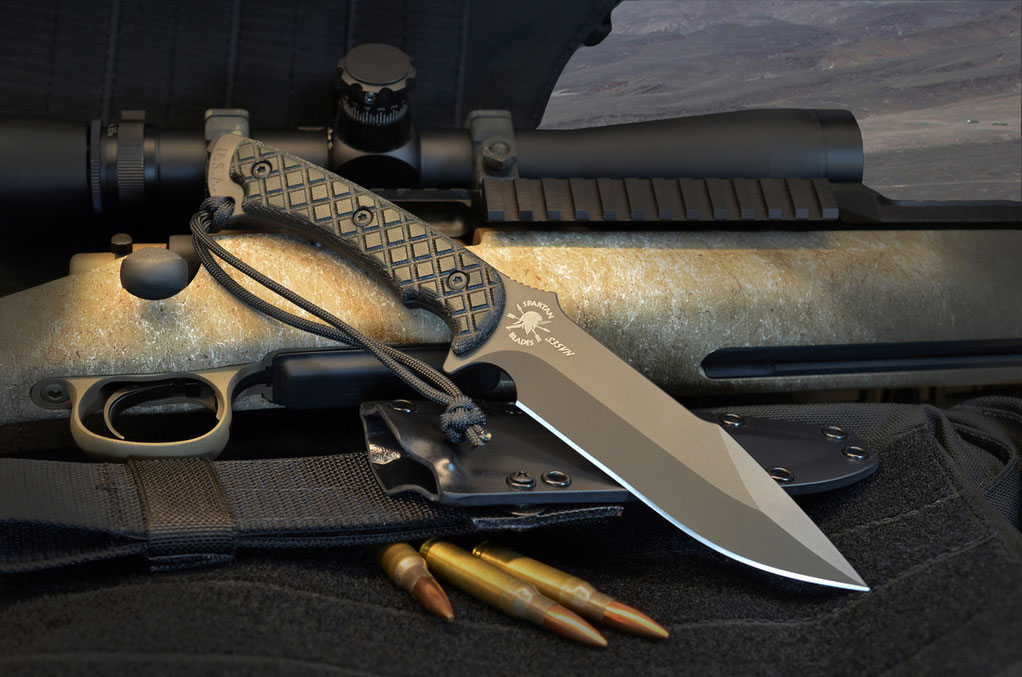
Knife Blade Shapes and Styles: Our Definitive Guide
At Spartan Blades, we pride ourselves on producing the finest in custom knives. Our blades are precision crafted, finely honed, and meant to last for many years to come.
If you browse our collection of fixed blade knives or custom folding knives, you’ll notice that our blades come in a variety of shapes, sizes, and styles. At the same time, though, you can see that some blades share certain characteristics with each other.
Did you know that there are actually specific styles and shapes that knife makers commonly use for reference when designing and crafting their custom knives? It’s true. While there are arguably dozens of different blade shapes out there, we’ve put together this definitive guide to the top 7 most common knife blade styles that you’ll encounter. Many of them are featured in our work here at Spartan Blades.
Ready to learn more? Keep reading!
1) Drop Point
The drop point is probably one of the most common shapes of knife blade that you’ll encounter. Drop point knives feature a blade with a convex shape that gradually curves from the base to the point. The end result is a great all-around knife for your next outdoor adventure.
Our Spartan Blades Pallas and Horkos knives feature a drop point style blade.
2) Fixed Drop Point
A slightly modified version of the drop point is the fixed drop point. This blade style allows for the blade tip’s strength to be placed in line with the hand of the knife wielder, while still maintaining an an upward curve to the blade’s cutting edge.
The Spartan Phrike, Ares and Formido are examples of fixed drop point style knives.
3) Full Tang
A full tang knife refers more to the construction of the blade than the shape itself. With a full tang knife, the entire knife is one solid piece, and the two handle pieces are pinned onto either side of the blade. This makes for an incredibly strong and durable knife.
Our Spartan-George V14 Dagger features a full tang style design.
4) Straight Back
Straight back knife blades are fairly common. They feature a straight back with a blade edge that curves upwards towards the end. These knives have long spines, making them excellent for difficult cutting tasks that might involve the use of a hand along the back for added force. They’re also a bit heavier and more powerful than other blade types.
The Spartan Formido is an example of a straight back style fixed blade knife,
5) Spear Point
Spear point style knife blades are symmetrical in shape, resulting in a tip that’s essentially centered with the knife’s handle. Depending on the design and purpose of the knife, either one or both of the edges will be sharpened. Spear point knives are capable of transferring significant power from the wielder’s arm and are often designed for thrusting.
The Spartan Kranos and Spartan Harsey TT are both examples of a spear point style knife blade.
6) Tanto
Tanto style blades are inspired by a traditional Japanese style short sword, carried and wielded by the Samurai during Japan’s feudal era. Rather than the curved blade that you’ll find on most knives, tanto blades feature an angled edge. This makes for a very strong edge that’s ideal for piercing tasks.
The Spartan Pallas Tanto features a tanto-style blade.
7) Sheepsfoot
A sheepsfoot blade is quickly recognizable by its straight edge and curved back. This design emphasizes slicing technique while making it harder to accidentally pierce something with the knife tip. This style of blade was originally used to trim the hooves of sheep, but is now frequently used for a variety of other tasks.
The Spartan Hybris features a sheepsfoot blade.
Do you have questions about our blade designs? Click here to contact us, and don’t forget to browse our selection of custom, handcrafted fixed blade and folding knives!
